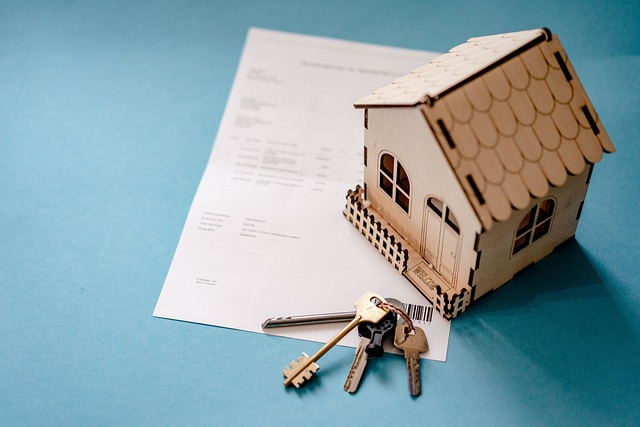Murky Waters for Property Investment

Is now the right time to start your property investment journey in Solihull? Ongoing uncertainties and the shifting landscape of the UK housing market overall mean you should consider various factors before making your decision. We explore the pros and cons of buying a house in 2023 and your potential return on investment, taking into account property values and potential buy-to-let yields.
The intangibles
If you hadn’t already heard, Solihull had a prestigious claim to fame in 2013 when, according to a Uswitch survey, it was voted the best place to live in the whole of the UK. And, fundamentally, Solihull remains a great place to live some ten years later. Its unique location between city and country, high-skilled workforce and great schools remain the same.
The town is abundant in historic architecture and approximately three-quarters of the area is classified as Green Belt, highlighting the borough’s commitment to preserving natural beauty. These factors, which are difficult to put a value on, ultimately improve the quality of life and will increase the price of property.
Investment ramping up in Solihull
Solihull has a strong economy that is based mainly on higher added value employment. Famously the birthplace of Land Rover, there are a diverse set of employers in Solihull and the surrounding cities, including automotive, advanced manufacturing, scientific and technical, transport and logistics, financial services and business and professional services.
According to figures published by the ONS, GDP per capita in Solihull was £46,149, compared to a GBP per capita of £26,315 for the West Midlands as a whole. The many well-paid jobs help to create a buoyant property market.
Investment in Solihull remains high and major projects are set to be rolled out in the coming decade. As detailed by the Government funded UK Central Solihull, the region is ranked in the top 10 UK destinations for business, contributing £5.1 billion to UK GDP and is connected to 35 million people within a two-hour travel time.
Arden Cross, an estimated £3bn development, is set to be a world leading economic hub for the Midlands, co-locating employment, learning, living and transportation in one place. All based around a new HS2 Interchange Station on the HS2 high-speed rail line.
Initial outlay is lowering
Latest data from the Nationwide House Pricing Index for all of the UK shows that annual house price growth has slipped back in May, representing a 0.1% month-on-month fall in house prices and 3.4% fall on an annual basis.
Robert Gardner, Nationwide’s Chief Economist, commented “Annual house price growth softened again in May, falling back to -3.4% (from -2.7% in April). Average prices remain 4% below their August 2022 peak. The average house price in the UK in May 2023 was £260,736.”
The latest data from the HM land registry for Solihull is March 2023, indicating an average property price of £337,198. A 1.63% month-on-month fall, but still a whooping 6.4% increase on an annual basis. Despite the annual gains seen earlier this year, one would expect the more recent trends seen across the UK to filter into the Solihull figures and it is reasonable to expect further increase in prices towards the EoY.
If you are currently looking to buy property in Solihull whether as investment / buy-to-let property or to live in, you will need to decide whether to purchase a property at a lower purchase price with a more expensive mortgage or to pay a higher price for a property and pay a cheaper mortgage. Is now the right buying time for a UK in the UK? A report from the Office for Budget Responsibility suggests house prices will see their biggest percentage fall in Q1 2024, with prices then bottoming out in Q1 2025. What’s more, this report was published before the May interest rate hike and the announcement of more being planned for the future… prices may drop further.
One thing is for sure, we are now entering a buyer’s market. Prices are subdued, there’s more choice and competition has reduced, so there’s less pressure to decide quickly and less risk of entering into a bidding war. Buyers who can move fast and already have their finances in order might be able to agree to a sizable discount with the vendor.
Buy to let
The UK buy-to-let market will always offer promising advantages in the long run. Buy-to-let property investment provides more control over your assets compared to other investment opportunities like pension funds. And whilst monthly income is currently squeezed by higher interest rates, it is generally stable and there is still strong potential for significant property value appreciation if you’re in it for the long-term. Providing security and the opportunity for genuine wealth growth.
However, there are also drawbacks to consider. Higher interest rates will reduce profits and may make it more difficult to qualify for a buy to let mortgage, meaning you may even have to invest a larger initial deposit. Additionally, changes to tax laws, including changes to mortgage interest relief and stamp duty surcharge on second homes, have impacted landlords’ profits. Lastly, there’s always the risk that there might be periods where the property is unoccupied, though this is less of a concern in desirable places to live like Solihull. Plus, private rented housing demand remains high.
Currently, landlords are selling more properties than they’re buying due to mounting costs of inflation and higher interest rates, leading to a riskier and less lucrative buy-to-let market across the UK.
Comparing buy-to-let yields
The buy-to-let yield is a critical factor to consider in the property investment sector in the UK. This yield varies greatly across regions and depends on market dynamics, namely property prices and rent levels but also alongside other factors like cost of property management and mortgage financing.
Generally, the North of England offers higher buy-to-let yields, with regions like Bradford, Manchester, and Newcastle-upon-Tyne yielding 10.6%, 10.1%, and 9.8% respectively. Although the highest yield nationwide is in the midlands, with Nottingham (NG7) offering an impressive 11.3%.
The higher cost of property in Solihull will naturally make higher yields more difficult to achieve, but if you consider the average buy-to-let interest rate in the UK is 3.41%, then there are a number of districts in Solihull which eclipse this. Postcodes B37, B36 and B91 all have impressive rental yields of over 5%.
Window for international investors
Following the Brexit referendum, the GBP to EUR exchange rate has virtually always remained below 1.2, after falling from a high of 1.43 at the end of November 2015. This depreciation of the pound meant that the euro was stronger against it, providing more pounds for your euros. As such, purchasing a property in the UK from a euro perspective has been cheaper during this period.
The GBPEUR rate fell to as low as 1.11 in Feb 2023, providing a window of opportunity for European investors to bag themselves an even better deal. Just a few months later by June 2023 the rate moved to 1.17, meaning that roughly an extra €6,000 euros would be required per £100,000 of investment into UK property. Despite the recently appreciating pound, now might still be the time for European investors to act.
Higher interest rates tend to directly correlate to an appreciation of the respective economies currency, and with inflation now starting to come under control in the eurozone, interest rate hikes are likely to soften faster than they are in the UK.
Now might well be the time for European investors to act. They can benefit from a comparatively favourable exchange rate on the purchase price and, if the pound continues to appreciate against the euro, they’ll get better returns if they repatriate their rental yields from sterling to euro.
Sounding off
Solihull remains an attractive property investment option, bolstered by its unique location, commitment to preserving natural beauty, and strong economy. A thriving jobs market and significant investments into the local economy suggest long-term stability and potential growth in property values. However, in light of recent market trends, potential investors must consider the ebbing growth of the UK housing market and increased interest rates, leading to more expensive mortgages. Though these conditions have potentially resulted in more negotiating power for buyers, who may be able to secure property at a reduced price.
For buy-to-let investors, the returns might be squeezed by rising costs and interest rates, and yields may not compete with those in the North of England. Nonetheless, the stable demand for private rented housing in Solihull suggests that these investments can still be profitable in the long run.
European investors, in particular, may benefit from the prevailing exchange rate, which renders UK property investments financially attractive, though this window may close as the pound strengthens.













